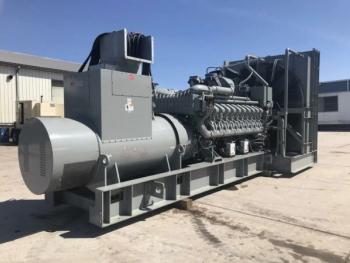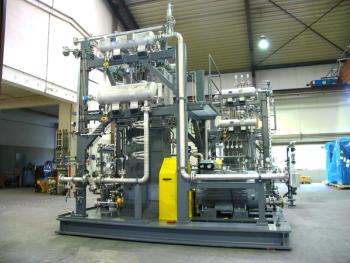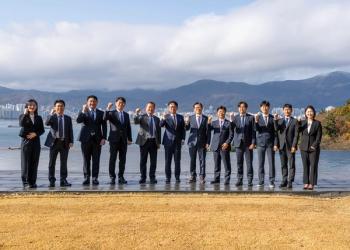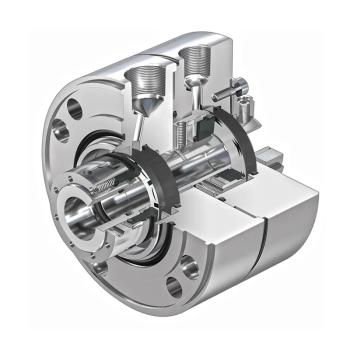
Rolls-Royce Introduces Compact Exhaust Gas Aftertreatment System for Maritime Vessels
Key Takeaways
- Rolls-Royce's Flex SCR system reduces NOx emissions by 75% and offers a 42% smaller footprint and 40% weight reduction.
- The system's ceramic substrate material extends service life to 18,000 operating hours, depending on load profile.
With the new Flex selective catalytic reduction system, ship operators may reduce their physical footprint by up to 42% and cut NOx by 75% compared to IMO II limits.
Rolls-Royce recently unveiled an updated, flexible, and compact exhaust gas aftertreatment system for yachts, tugs, and ferries using the 16-cylinder mtu Series 4000 engine. The
Additionally, the Flex SCR has an increased service life for its ceramic substrate material: up to 18,000 operating hours depending on the load profile. The system cuts NOx emissions by 75% compared to IMO II limits. Rolls-Royce’s new system features installation flexibility, as components can be installed horizontally, vertically, upright, or suspended in the engine room. Its weight was reduced via the mtu Cube Box product.
“This modular new exhaust aftertreatment system can be even better tailored to the specific needs of our customers and offers them many advantages for their voyages in emission-controlled areas,” said Denise Kurtulus, Senior Vice President Global Marine at Rolls-Royce Power Systems. “Rolls-Royce has set itself the strategic goal of supporting its customers in their business with sustainable and efficient solutions.”
Maritime vessels, with integrated propulsion systems in the power range between 2,176 – 2,560 kW, can operate in strict IMO Tier III emissions-control areas (ECAs) with the Flex SCR. For example, these ECAs include the Baltic Sea, North Sea, and the North American coastline. Shipyards and ship owners may also switch the reducing agent’s dosing on and off, especially when traveling from one ECA to another.
The actively controlled system continuously measures emissions upstream and downstream of the SCR unit, ensuring optimal and compliant exhaust aftertreatment operation with minimal dosing of the reducing agent.
Maritime Tech in Singapore
In early April 2025,
The Maritime and Port Authority of Singapore (MPA) will dedicate a multi-purpose, hybrid patrol craft for the pilot project: the MPA Guardian, equipped with two mtu Series 16V2000 engines. Rolls-Royce will install the mtu NautIQ Foresight equipment health management system to collect vessel data and optimize operations before moving on to additional testing.
Sea-Based Automation
The
“There are several advantages to our automation systems: The crew can focus on its main tasks and competencies—for small crews, this is a big advantage,” said Simon Gallagher, Director of mtu NautIQ Solutions, Rolls-Royce Power Systems. “The technical complexity and maintenance tasks can be managed by the fleet-management team on land. Decisions are made based on live data, not on historical data. Cloud analytics and AI technologies can be made available for operators.”
Newsletter
Power your knowledge with the latest in turbine technology, engineering advances, and energy solutions—subscribe to Turbomachinery International today.





